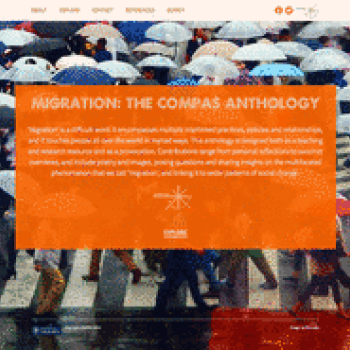
Writing about children and ‘the politics of culture’ at the end of the twentieth century, Sharon Stephens (1995) characterises the modern world in terms of ‘transnational flows of commodities and people; by vast numbers of refugees, migrants, and stateless groups; by state projects to redefine the threatened boundaries of national cultures [...]’. Children are typically cast as unwitting and passive subjects of these shifting global forces, rather than active participants who experience, challenge and reshape the world around them. Boys and girls who migrate alone attract particular attention internationally as victims whose rights have been violated, thus triggering an array of protective policy and programmatic responses. Yet the extreme economic, social and political inequalities that commonly underpin this trend remain largely ignored.
Prevailing ideas about independent child migration reflect recent efforts globally to re-set the boundaries of what it means to be a child; these efforts increasingly define and govern children’s use of time and space. Growing attention is given to children’s vulnerability, their learning needs and dependence on adults, with emotional attachments formed in the context of stable nuclear family structures being regarded as central to their development and well-being. In this expanding paradigm of childhood, the young are portrayed as learners rather than earners. Global initiatives such as the Education for All campaign and the associated expansion of formal schooling have played their part, as boys and girls everywhere are expected to attend school full-time until well into their teens. Relatedly, child migration for work is taken as a threat to schooling and a sign of family breakdown or mistreatment and is often confused with trafficking. As a result, the everyday experiences of migrant boys and girls are overshadowed by a focus on street and trafficked children, child sex workers, or child refugees, with no consideration of the absence of viable options for young people locally.

Writing about children and ‘the politics of culture’ at the end of the twentieth century, Sharon Stephens (1995) characterises the modern world in terms of ‘transnational flows of commodities and people; by vast numbers of refugees, migrants, and stateless groups; by state projects to redefine the threatened boundaries of national cultures [...]’. Children are typically cast as unwitting and passive subjects of these shifting global forces, rather than active participants who experience, challenge and reshape the world around them. Boys and girls who migrate alone attract particular attention internationally as victims whose rights have been violated, thus triggering an array of protective policy and programmatic responses. Yet the extreme economic, social and political inequalities that commonly underpin this trend remain largely ignored.
Prevailing ideas about independent child migration reflect recent efforts globally to re-set the boundaries of what it means to be a child; these efforts increasingly define and govern children’s use of time and space. Growing attention is given to children’s vulnerability, their learning needs and dependence on adults, with emotional attachments formed in the context of stable nuclear family structures being regarded as central to their development and well-being. In this expanding paradigm of childhood, the young are portrayed as learners rather than earners. Global initiatives such as the Education for All campaign and the associated expansion of formal schooling have played their part, as boys and girls everywhere are expected to attend school full-time until well into their teens. Relatedly, child migration for work is taken as a threat to schooling and a sign of family breakdown or mistreatment and is often confused with trafficking. As a result, the everyday experiences of migrant boys and girls are overshadowed by a focus on street and trafficked children, child sex workers, or child refugees, with no consideration of the absence of viable options for young people locally.

